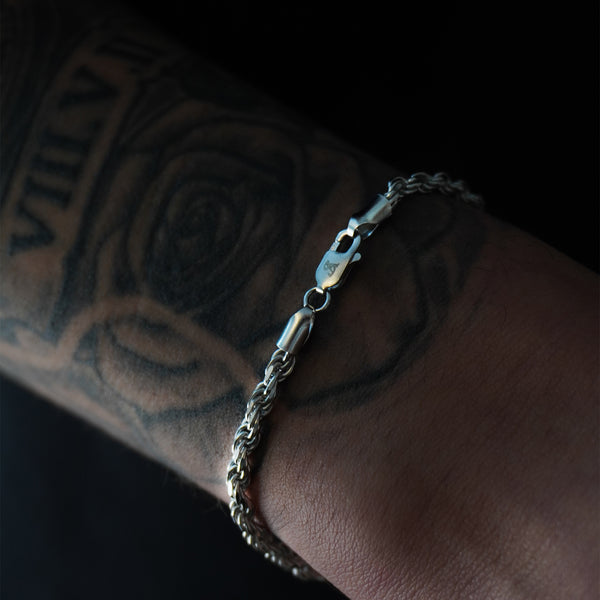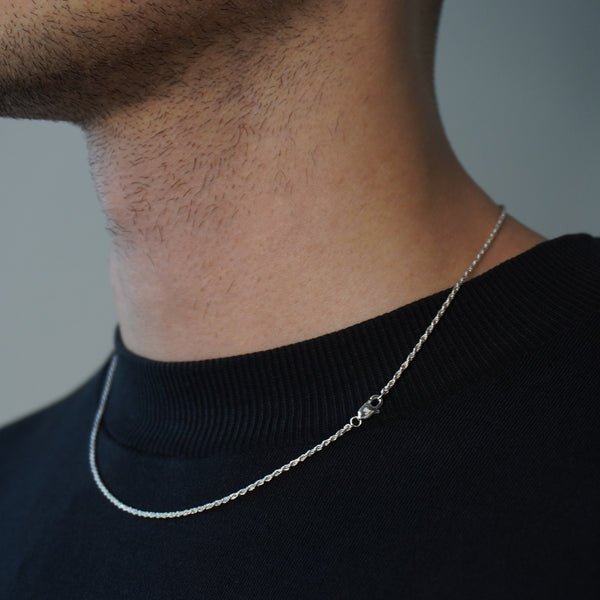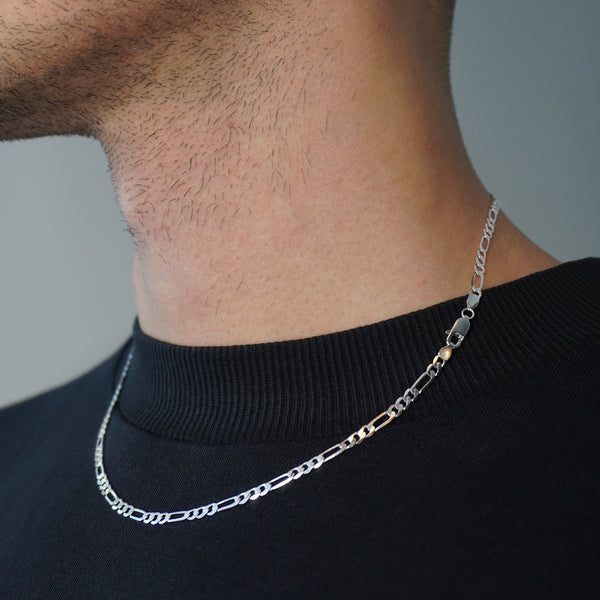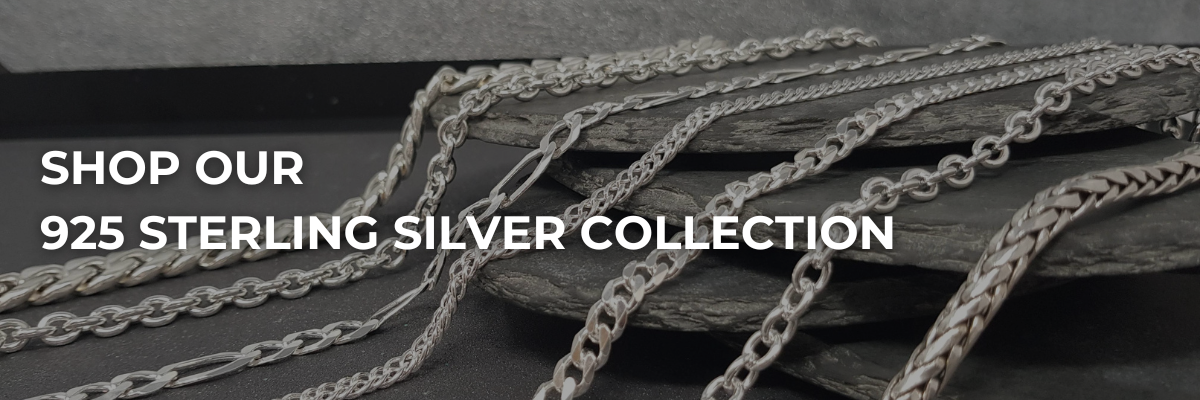When it comes to silver jewellery, sterling silver and silver-plated jewellery are among the most popular options. Both sterling silver and silver-plated jewellery have their own set of pros and cons, and becoming knowledgeable about them is essential before making a buying decision.
In this blog, we compare sterling silver vs silver-plated jewellery. We’ll cover their pros, cons and differences. At the end of the blog, we’ll also provide you with some advice on which may be best for you.
What Is Sterling Silver Jewellery?

Sterling silver jewellery consists of 92.5% pure silver and 7.5% other metal alloys. Silver is alloyed with other metals to increase its durability. The most common metals used for alloys include copper and zinc.
Sterling silver is considered a precious metal, and jewellery made from this material will have a “925” hallmark to indicate their composition. Sterling silver is a popular material for jewellery because of its unique silver-white lustre.Pros
- More detailed designs - sterling silver is a softer and easier-to-manipulate material. This makes it perfect for creating details on jewellery pieces.
- Easy to repair and adjust - sterling silver jewellery is also often easy to repair and adjust. Repairing and adjusting sterling silver pieces will just require soldering.
- Appearance - sterling silver jewellery has an iconic bright white lustre appearance that other silver metals can’t replicate.
- Value - silver is considered a precious metal, therefore jewellery pieces made using it will have greater value.
- Less prone to damage and tarnishing - being alloyed with non-precious metal, sterling silver is surprisingly durable. Especially when compared with 99.9% silver jewellery which is much softer.
- Lightweight - sterling silver is a lightweight material, which makes it perfect for making everyday wear jewellery.
Cons
- Price - because silver is considered a precious metal, jewellery made from this material tends to be more expensive. Additionally, if your pieces feature rhodium plating and are made in Italy like ours, this can increase the price of your jewellery piece.
- High maintenance - sterling silver jewellery will require regular cleaning from time to time to maintain its lustre. For some, constant cleaning and maintenance can be annoying and too time-consuming.
What Is Silver Plated Jewellery?

Pros
- Affordable - silver plated jewellery will cost a fraction of the cost of solid sterling silver jewellery. This is because the silver content for plated jewellery is lower.
- Appearance - silver-plated jewellery looks exactly like silver but at a fraction of the cost of solid sterling silver.
Cons
- Durability - the silver plating on silver plated jewellery can wear off easily. This is especially true when exposed to chemicals in perfume and shampoos or moisture from sweat, showers and swimming pools.
- Tarnishing & corrosion - once the thin layer of silver wears off from silver-plated jewellery, the base metal will be exposed. Depending on the type of base metal used, your jewellery piece can tarnish and corrode fairly quickly.
- Value - silver plated jewellery is less valuable because of its low silver content.
- Care maintenance - silver plated jewellery will require much more cleaning and maintenance to prevent the silver layer from wearing off and tarnishing.
Differences Between Sterling Silver And Silver Plated Jewellery
- Detail - Sterling silver jewellery is often much more detailed than silver-plated jewellery. Solid sterling silver jewellery is softer than the base metal used with silver-plated jewellery. This makes it more malleable and easier to manipulate material.
- Value - sterling silver jewellery has greater value than silver-plated jewellery. This is because sterling silver jewellery has a greater silver content than silver-plated jewellery.
- Durability - sterling silver jewellery is more durable than silver-plated jewellery. This is because the silver layer can wear off fairly quickly when it has been plated. Whilst the lustre of sterling silver is forever when cared for properly.
- Resistance to tarnishing & corrosion - Sterling silver jewellery is much more tarnish and corrosion-resistant than silver-plated jewellery. This is because sterling silver jewellery has far fewer metal alloys.
- Weight - silver plated jewellery tends to be heavier than sterling silver jewellery. This is because non-precious base metals used for silver-plated jewellery are much heavier.
- Price - sterling silver jewellery is more expensive than silver-plated jewellery. This is because sterling silver jewellery has a higher silver content, thus deemed as more valuable.
- Cleaning & maintenance - sterling silver jewellery requires less cleaning & maintenance than silver-plated jewellery. You will need to clean silver-plated jewellery much more frequently to prevent the silver layer from wearing off.
Sterling Silver vs Silver Plated Jewellery: Which Is Better?

Whether sterling silver or silver-plated jewellery is better for you will depend on your budget, personal preferences and styling needs.
Sterling silver jewellery is perfect for someone who wants a jewellery piece that has an unmatched shine, higher value and is easy to repair. This is also a great choice for someone looking for silver jewellery that is less prone to tarnishing, easier to repair and requires less care & maintenance.
Silver-plated jewellery is perfect for someone who wants the look of silver jewellery at a fraction of the price and that doesn’t mind sacrificing durability, value and tarnish resistance for that.
Conclusion
Now that we have compared sterling silver vs silver-plated jewellery, you should have a better understanding of what each is. You should also be more knowledgeable about their pros and cons, as well as their differences. The choice between these two types of silver jewellery will largely depend on your personal preferences, budget and styling needs.
Sterling silver is considered the more valuable option, being made from the precious metal. This is a great option for those who want jewellery that has a bright white lustre, is easier to repair and is less prone to tarnishing.
Silver plated jewellery offers the same look as sterling silver jewellery, however at a fraction of the cost. But, sacrifices durability and tarnish resistance.
When choosing between the two, always put first how these pieces look and make you feel when you wear them!
FAQs about sterling silver and silver-plated jewelleryHow can you tell if jewellery is sterling silver or silver plated?There are plenty of ways you can tell whether jewellery is made from sterling silver or is silver-plated. One of the main ways is to look out for a hallmark. All solid sterling silver jewellery will have a “925” hallmark to indicate their composition. In terms of appearance, silver-plated jewellery will have a much brighter and whiter appearance than sterling silver jewellery. This is because silver-plated jewellery is usually plated with pure silver, rather than 925 silver. How long does silver-plated jewellery last?Silver-plated jewellery doesn’t last long. The silver plating is prone to tarnishing, fading and chipping with daily wear and tear. Silver-plated jewellery in comparison to gold-plated jewellery is much less durable, this is because pure silver is softer than pure gold. Is silver-plated jewellery worth anything?Silver-plated jewellery is not worth any money. This is because the content of silver is extremely little, with most of the jewellery consisting of a non-precious base metal. |












































